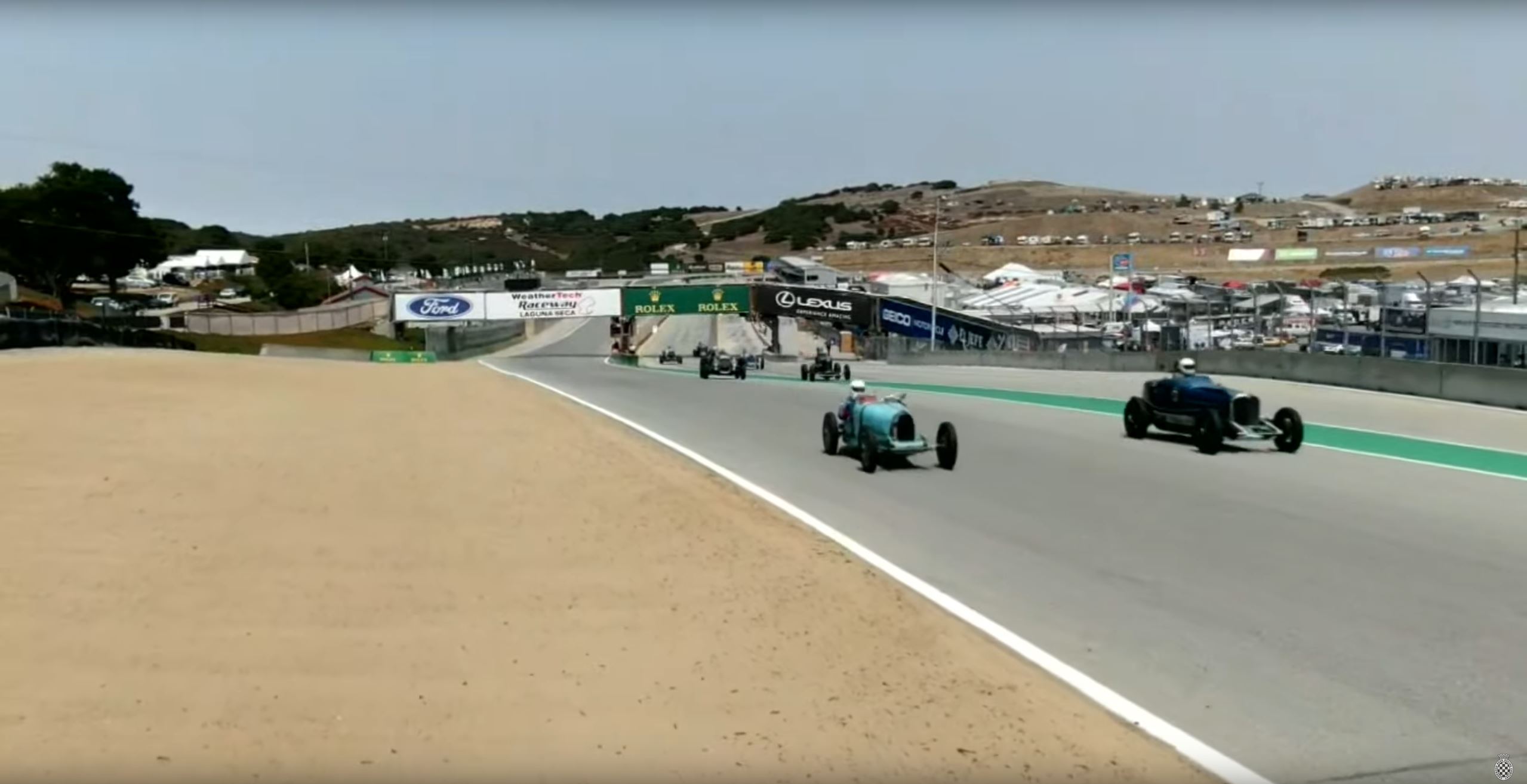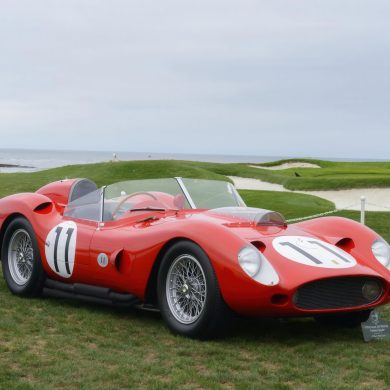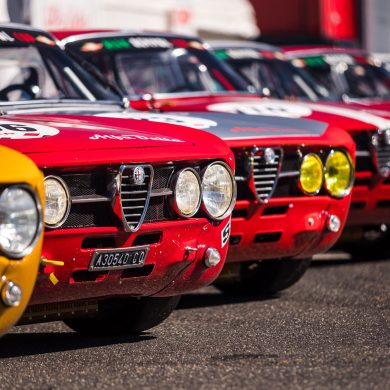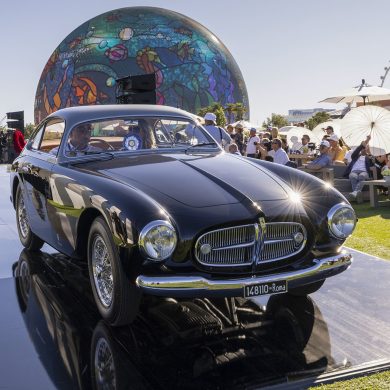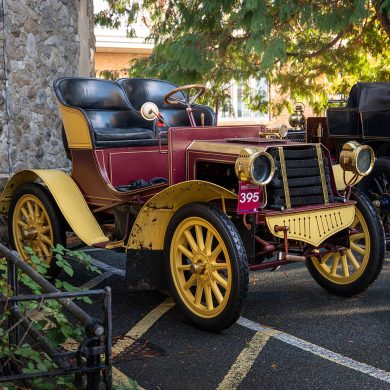And now we come to the final day of the Monterey Motorsports Reunion at Laguna Seca. Due to an unfortunate power outage around the track, there was no live stream or live timing of the morning session, however things were remedied in time for the afternoon session, which you can find here: Monterey Motorsports Reunion Day 4.
This session played host to probably one of the most expensive GT cars at the Reunion, as well as bringing out the ridiculously powerful Endurance Legends machines for a romp around the track.
1961 Ferrari 250 GT SWB

I guess the saying holds true, go big or go home! In the very first race of the afternoon session, 1955 to 1964 GT cars were let loose on the twists and turns of Laguna Seca, and while many of them were probably worth a pretty penny, it’s not every day that you get to see a car worth $8 to $10 million dollars tangling with other GT cars. This is exactly the use that a 250 GT SWB was designed for, and it’s honestly refreshing to know that at least one of these ultra-rare cars is getting to stretch all 12 of its V-shaped legs.
More correctly named the 1961 Ferrari 250 GT Short Wheel Base (SWB) Berlinetta Competizione, this is a car that was never meant to see the road. Using a fully aluminum body over a compact, short wheel base aluminum space frame, the 250 GT SWB was only about 100 lbs heavier than its far more valuable cousin, the 1962 Ferrari 250 GTO. Both cars used variations of the 3.0L Tipo 168 Colombo V12, with the 250 GT SWB getting the Tipo 168B, which was fitted with six twin-choke Weber 38DCN carburetors to give it a power output of 275 HP.
In terms of pedigree, there are not many cars better than any of the 250 GT family, with the SWB scoring multiple victories in the early 1960s at the Paris 1000 KM, the Tour de France, and class victories in almost all the important endurance events like the 24 Hours of LeMans. It should also be noted that the 250 GT SWB Berlinetta was in part responsible for tractor manufacturer Ferruccio Lamborghini switching over to making sports cars. He owned several 250 GT SWB’s and got fed up with Enzo Ferrari’s seeming indifference to his complaints about the clutch and the problems he was encountering.
Then again, if you’re wealthy enough to own any form of Ferrari 250 GT car, you’d definitely be wealthy enough to afford the race-day insurance coverage you would need to take it out and give some proper stick! I’m just personally glad someone did, and we get to appreciate one of the most beautiful GT racing cars to grace the race tracks of our fair planet.
1967 Ford GT40 Mk IV

Speaking of going big or going home, the race after the mid-century GT cars was the FIA Manufacturers Champions class. The car that best represents this class is the warhammer that Ford took to Le Mans to do battle with the Ferrari 330 P4. The battle in the latter half of the 1960s between Ford and Ferrari is the stuff of legend, and has been the basis for multiple non-fiction books, the backdrop of a few movies, and even the central theme of a very recent movie, Ford vs Ferrari. So it only seems fitting that the mighty 1967 Ford GT40 Mk IV is the next major car that made an appearance on the final day of racing.
As far as anyone is aware, there are only twelve total GT40 Mk IVs, including the prototype cars, in existence, numbered J1 to J12, and hence are referred to as the J cars. To see one of the twelve actually driven in anger, a gigantic 7.0L Ford V8 thundering out just under 500 HP behind the driver, the car only 40 inches tall from tarmac to roof bubble… it warms the heart and shatters the ears! This particular Mk IV also has the famous “Gurney Bubble” in the driver’s door headliner, as Dan Gurney couldn’t find into the car with his helmet on, and needed the extra inch of headroom.
While the Mk I, II, and III versions of the Ford GT40 all had the chance to race and win at Le Mans repeatedly, the Mk IV only raced in two events in its model life. These two events both were in 1967, and were the 12 Hours of Sebring, which the Mk IV won outright, and the 24 Hours of Le Mans, which the Mk IV won both outright and class. The GT40 Mk IV was also the only version of the American legend that was built entirely in the USA, contracted to Kar Kraft Manufacturing by Carroll Shelby.
In total, 45 GT40’s of all Marks were made, including prototypes. Of those, it is estimated that only half are still driven, and of those, only two or three are driven at speed on a track. So this was a special moment to see the sky blue #6 come flying up the hill, brake hard, and plunge down the Corkscrew and into Rainey Curve.
2005 Audi R8 LMP1

The last class that was released onto the track in the short afternoon live stream was the Endurance Legends class, which consisted entirely of proven race winners from any international level endurance race. There were Jaguar XJR’s, BMW M3 GTR’s, and more Porsche’s than you could count, but racing along in the middle-front of the pack was a car that for many of the younger generation, came to define endurance racing: The 2002 to 2005 Audi R8 LMP1.
This low-slung, wide, and ridiculously fast race prototype car carried many Audi technological firsts that are, today in 2021, considered as standard on any Audi car you buy. It was the first Audi V8 to feature FSI Direct Injection, which boosted fuel economy enormously by completely bypassing a port-style fuel injector, instead releasing the fuel at 100 Bar (1,450 PSI) to atomize instantly within the cylinder itself during the air intake stroke. This improved fuel efficiency so much that instead of pitting for fuel every 9 laps, the R8 LMP1’s could go 10 laps before needing to refuel. And when your engine is a 3.6L twin-turbocharged monster of a V8 that pushes out 680 HP, and enough torque to reverse the spin of the Earth, that efficiency pays dividends.
That may not sound like much, but over the course of a race that covers 360 or more laps, that’s five full pit stops that are avoided. Taking the minimum required pit time of 70 seconds into account, that’s just about 7 minutes over 24 hours saved. And in endurance racing, every second counts.
The R8 LMP1 is also a classic for another reason, being the final LMP1 car built by Audi that followed the LMP900 regulations. This ruleset stated that the curb weight of the car, dry and without driver, with all body panels and wheels/tires fitted, had to be more than 900 kg (1,984 lbs). Being German, Audi of course made the curb weight of the R8 LMP1 901 kg.
Despite having the massive rear spoiler across the back, the R8 LMP1 investigated an idea that Toyota had started developing with their TS020 from 1999, that of using the body itself, and the various places winglets, cavities, and ducts could be placed to generate most of its downforce just by moving through the air at any speed. This was the basis for the excellent aerodynamic stability of the evolution into the 2006 to 2009 Audi R10 LMP1, before it was perfected over the the short-lived 2009 R15 TDI and 2010 R15 TDI Plus. This mastery came to bear with one of the most dominant LMP1 cars ever built, however, in the 2011 Audi R18 TDI and its evolution, the hybrid-era 2012 and beyond R18 e-Tron Ultra


